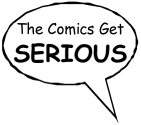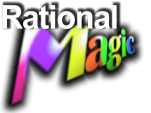|
GENRES:
Superheroes
AUDIENCE:
Adults, teens, kids; superhero violence
NOTE: This book collects issues #1-4 of JLA [Justice
League of America].
SYNOPSIS:
An alien spaceship disgorges a handful of super-beings who call
themselves the Hyperclan. Their leader, Protex, announces to
the world that they've come from a world that polluted itself
to death, and the Hyperclan is here to prevent Earth from going
down the same path. Only the Justice League of America distrusts
the Hyperclan's motives, with Superman pointing out that humans
need to create their own paradise, not be given one. But his
words fall on deaf ears. With a combination of good works (turning
the Sahara Desert into a garden spot) and mind control, the Hyperclan
turn the people of Earth against the JLA. Things heat up when
members of the Hyperclan destroy the JLA satellite, then attack
individual members, who are often too busy squabbling amongst
themselves to mount an effective defense. Things look their blackest
when Batman's plane is blown up and Superman is brought down
by kryptonite. Most of the other JLAers are strapped to the "Flower
of Wrath," an elaborate torture device, and Protex has the
helpless Superman strapped in a chair so he can watch the painful
execution of his friends. And more of the Hyperclan's race are
ready to beam down and take over Earth.
EVALUATION:
Yet another rebirth of an ancient hero team and regurgitation
of a plot used god knows how many times. The heroes are the usual
two-dimensional squabbling posers, and the villains are the usual
one-dimensional gloaters who trot out, among other things, the
tired old wheeze about the JLA being "too good" for
the puny Earth people. In another amazingly unimaginative twist,
the plot hinges on the baddies' complete dismissal of Batman
as a credible foe, so of course you know he's going to be the
most effective of the lot. Also, like so many other useless baddies,
the Hyperclan insists on an elaborate execution of the captured
heroes, not a quick-and-dirty one that would serve their purposes
much more efficiently but that would not, of course, give us
such a picturesque death machine or time for the uncaptured heroes
to make mischief. (I swear to god, you could build a city out
of all the dumbass bad-guy multiple hero-torture or hero-draining
machines that have appeared in comics. And why do the baddies
need to televise the execution of the JLA when they already have
the humans of Earth under their sway? Give me a friggin' break!)
The art is strictly standard superhero stuff, with an emphasis
on "heroic" poses, angled panels, and anatomically
incorrect close-ups and action shots. In fact, this book is almost
an encyclopedia of superhero plot cliches. And do the outrageous
amounts of power being tossed around mean that this book is supposed
to be considered mythic?
Funny, I remember Grant Morrison as being a lot more creative
than this. I guess "The Coyote Gospel" was a long,
long time ago. He crosses the line into pretention at times,
as when the Flash thinks, "The speed field beginning to
form around me: a flowing world of mystery silver, morphing hyperdimensional
gels. Speed heaven, the source of my power." That would've
sounded bad as narration; as internal dialogue, it's truly laughable.
There are interesting things to be done with superheroes.
Morrison helped prove that a decade ago. But this book is about
as far from interesting as that lost era. As kiddie lit, New
World Order is passable; it'll entertain kids and teens with
little or no background in superheroes, or who don't care that
they've seen this story a thousand times before. As myth, or
whatever Morrison was trying to accomplish, it dies. |



